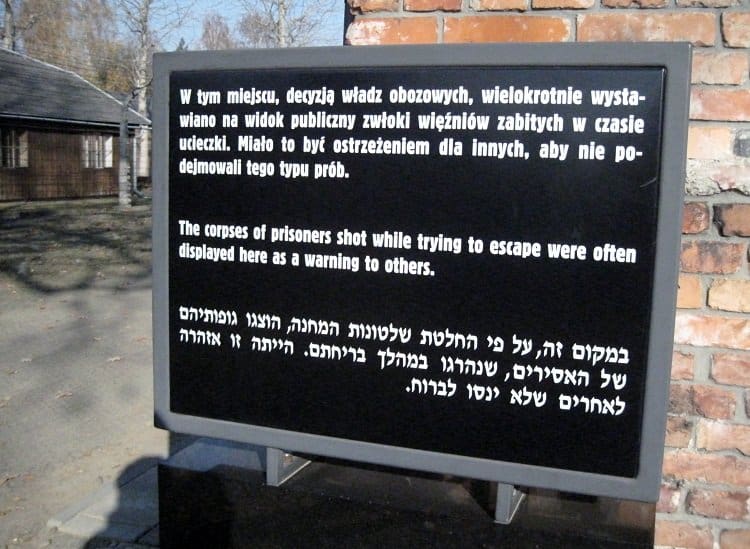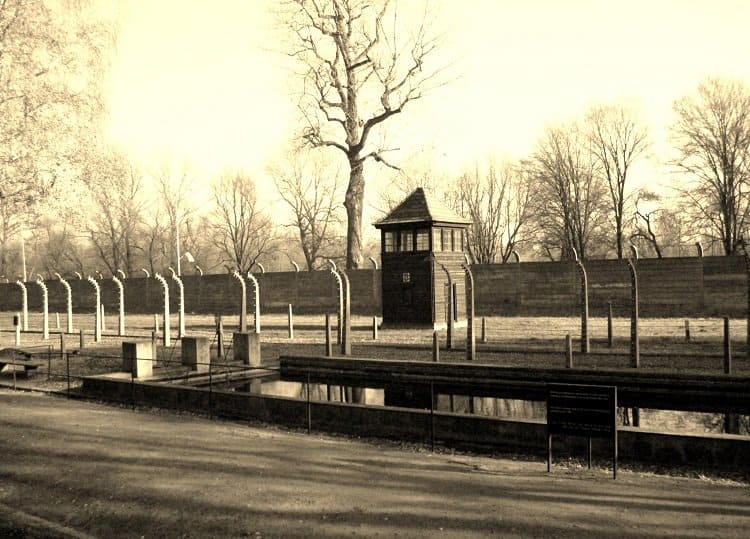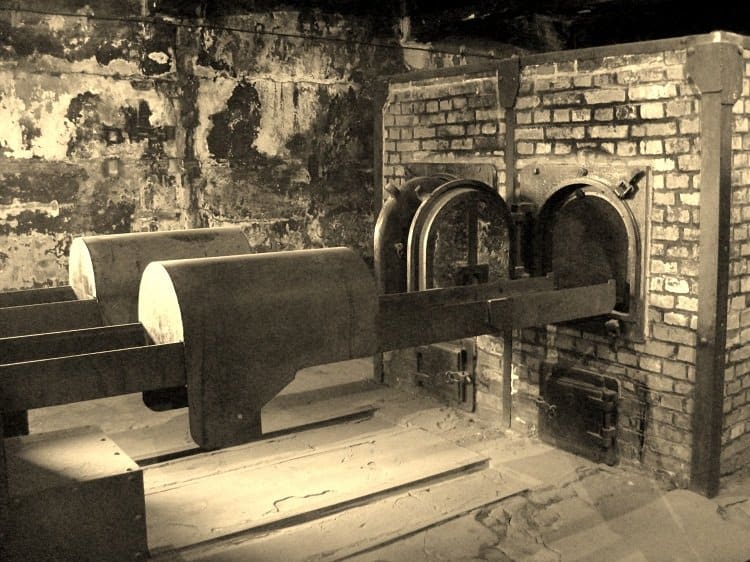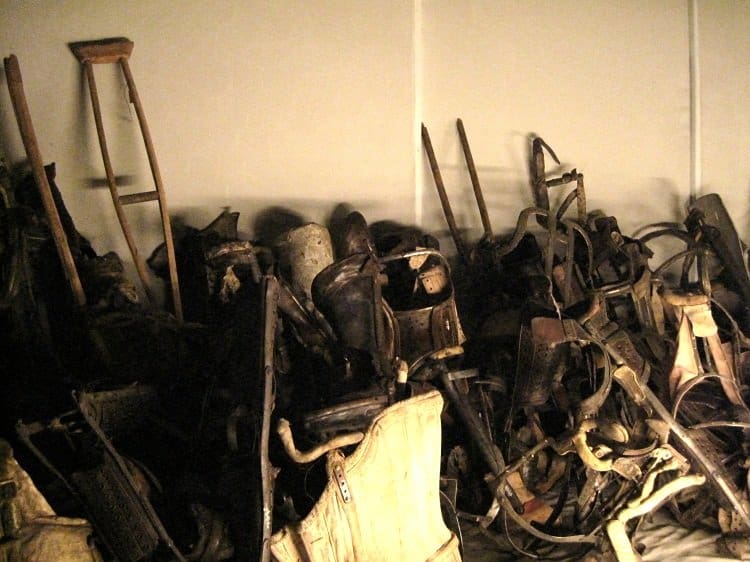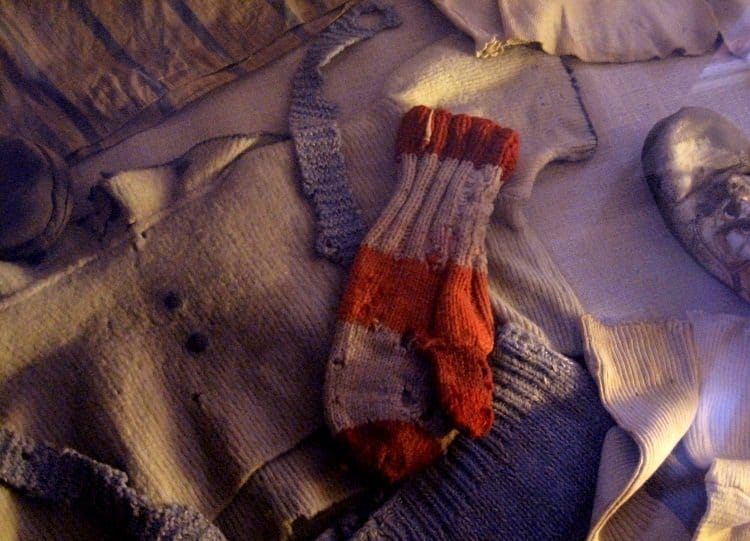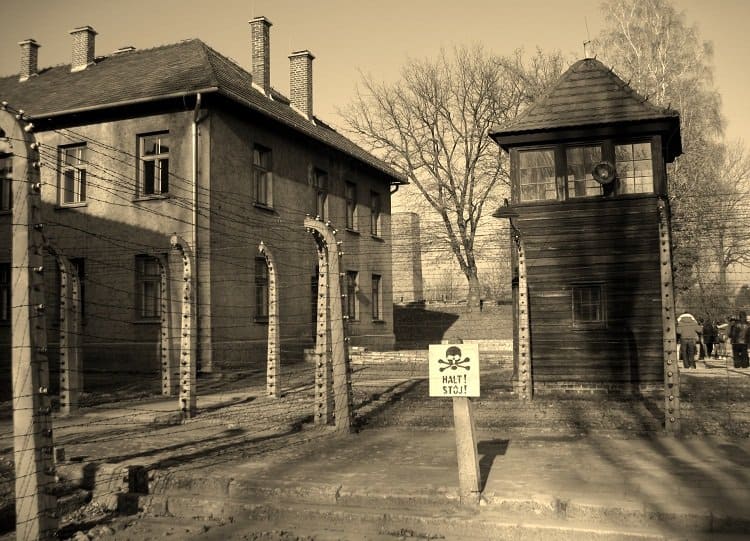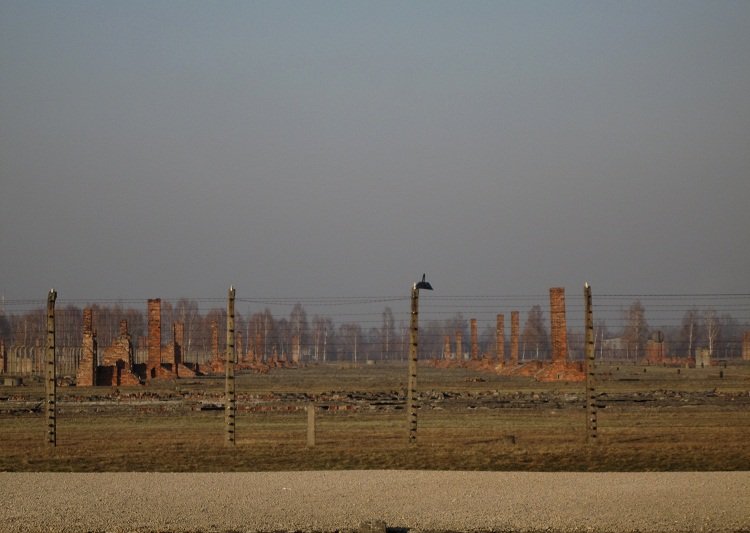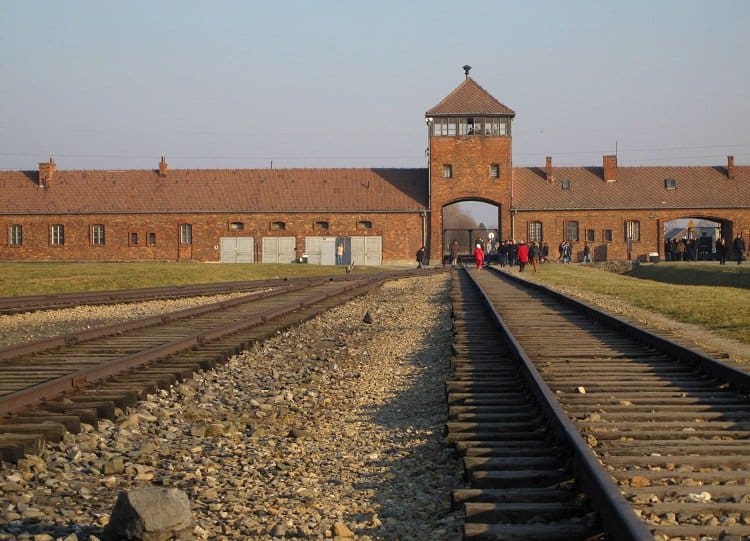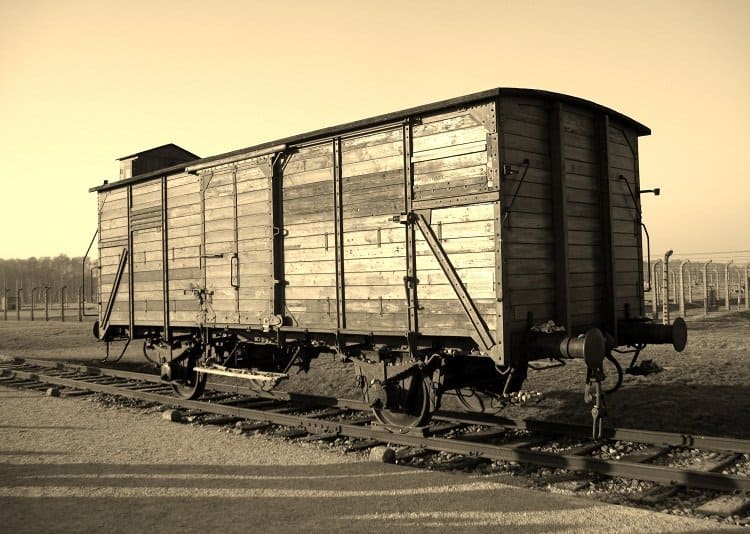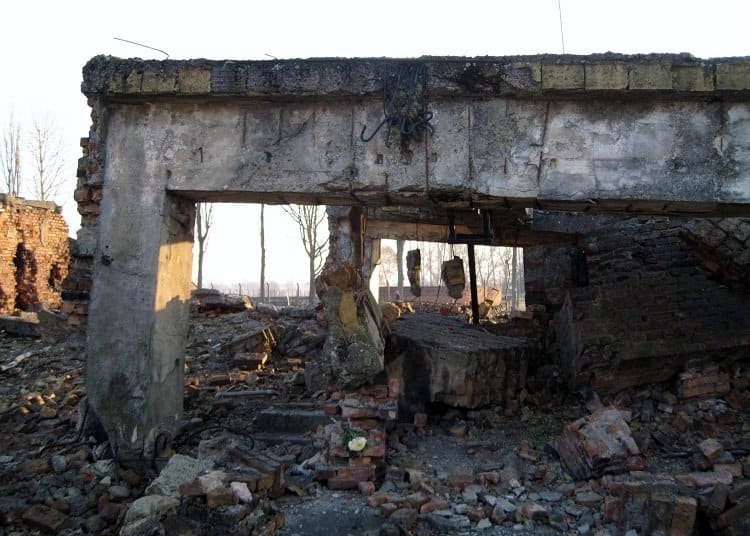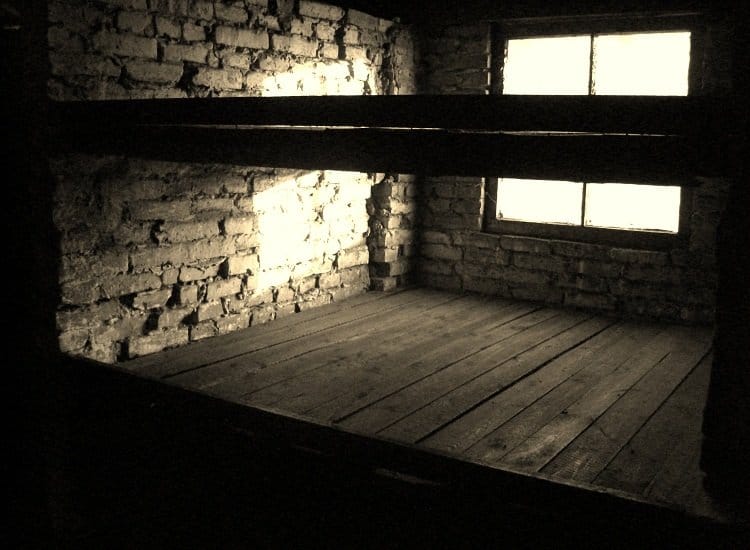Touring the Auschwitz and Birkenau sites requires a certain degree of numbness. As we trudged along the frosty ground with hundreds of other visitors we were confronted at every turn with signs and evidence of unspeakable acts. It wasn’t enough for those responsible to shoot or gas the victims. No, the Nazis took things a few steps further. They tortured these people, starved them, labelled them, humiliated them, exploited them.
Who were the 1,300,000 human beings that died here?
Ninety per cent (1,100,000) were Jewish
140,000 – 150,000 were Polish
23,000 were Roma (gypsies)
15,000 were Soviet prisoners of war
25,000 were prisoners from other ethnic groups
The non-Jews were persecuted because they were: criminals, homosexuals, anti-social, religious, political prisoners (one might be classified as a political prisoner for something as simple as reading a resistance pamphlet).
Auschwitz seemed small to me at first. John pointed out that if it seemed small it just showed how much they packed people in. Birkenau was more like what I expected: a vast open space (just over one square mile) with watchtowers and few buildings remaining. Here, the crematoriums have been destroyed, only their rubble remaining. Even this space seems small considering how many people were lost. Train tracks leading right up to and through the entrance gates remind us that from March 1942 most of the arrivals were gassed right away. There was no brick housing here for the prisoners, just crappy wooden buildings where they slept on wooden bunks. Disgusting.
I have no words to adequately express the sorrow I feel when I think about what happened here. It equally saddens me when I think about how few of the Nazis actually paid for their crimes. Read about things like Operation Paperclip (the British had a similar scheme) and tell me whether you think justice was done. As in much of life, politics excused many guilty people.
Getting there: It’s a mission! I feel very critical about the transportation situation given Auschwitz-Birkenau’s popularity in the region. Yes, buses run from the station at Krakow Glowny but these (in November anyway) are minibuses holding less than 20 people. Be sure to buy your tickets for this bus before going to the platform – even if you are told you can buy tickets from the driver. The people who buy tickets inside get to board first and even though we were first in line, we almost didn’t get a seat after waiting 40 minutes in the cold after the first bus was full. The other option is a train, though these take two hours (45 minutes more than the bus) and you’ll still need to walk or take a taxi to the grounds. I’m told that tours from companies that operate out of the city often don’t allow you enough time at the site.
My recommendation is to hire a car but if that isn’t possible, the bus times from Krakow are as follows:
7.10, 7.50, 9.00, 9.20, 9.55, 10.20, 10.45, 11.00, 12.50, 13.25, 14.05, 14.35, 15.00, 16.00, 16.45 (others run until 19.30 but the grounds will be closed).
To get back, catch the train or minibus. If you go by train don’t be alarmed when you reach a stop in the middle of nowhere, sit for ages and then start going in reverse. The train will then reach Glowny (if that’s where it said it was going) after a stop or two. A taxi from Auschwitz back to Krakow costs 250-350 zlotys and could be a good option if you can get a minivan cab and split it five ways.
It is possible also to stay in Oswiecim overnight.
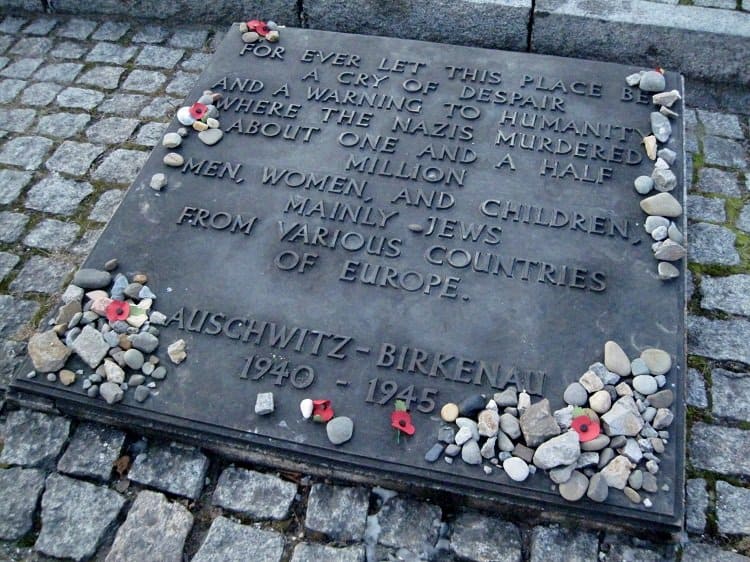
The visit: You’ll want to allow a full day for this trip. Guided tours run about every hour in different languages and you’ll be given a headset to wear so you can hear the guide’s voice without him having to shout. We thought it might not be so busy in November but it was very crowded and I imagine always is so be prepared for that. You’ll walk through Auschwitz first, which is mostly a museum housed in a few of the thirty surviving brick buildings, before a bus will take you to Birkenau. Parking is available at both sites. There is also a cinema that shows a movie about the liberation of the camp for an additional fee but this was closed on the day we visited. At Birkenau the tour continues, though very little of this is indoors.
Have you ever visited a concentration camp? What are your thoughts on the experience?
You may also enjoy these similar posts:
- 55shares
- Share on Facebook
- Pinterest6
- Twitter5
- Tumblr
- Evernote

